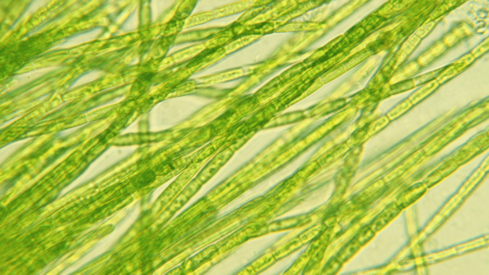Potential benefits of using algae in pet food

To gain more knowledge about using algae in pet food, Feed Design Lab set out to run two experiments. Here is what happened.
The experiments
The first experiment was to gain knowledge about all possible ways of using dry and wet microalgae in the production of feeds. Dry algae can be mixed in the ground meal before extrusion or pelleting. A very sustainable option is to use algae paste and pump this in the steam-heated meal just before expanding. It is also possible to use dry or wet algae in the vacuum coater, to skip the heating process and keep all of the bioactive substances from the microalgae available for pets.
The second experiment was to test if extruded food for dogs containing only 0.5% of dry algae could influence the immune system, measured by analysis of Immunoglobulin A (IgA) in the manure.
A dog experiment was conducted in a kennel and the results show that the intake was fine, as well as the colour of the manure. In the extruded feed 0.5% of Chloromonas was added during mixing and produced with the same process conditions as the control (hypo-allergic) feed without added microalgae.
Results
The IgA, calculated in dry manure, showed the highest level in the dogs with the Chloromonas feed, showing a trend (P=0.07) compared to the control feed. In this experiment, dogs with low levels of IgA in the control feed showed an improvement of 85% in IgA when fed the Chloromonas feed. Dogs with intermediate levels improved 53%, while dogs with good levels of IgA did not show improvement.
Immune function benefits?
Improving IgA levels with small amounts of microalgae could be interesting for dogs to have a better immune status. This finding opens up the way for testing with other types of feeds and other species of microalgae. Sampling manure is easy to perform and does not interfere with the dogs’ welfare when compared to blood sampling. An ELISA test kit is available to analyse the IgA in the manure. This method was recently validated for dogs.

